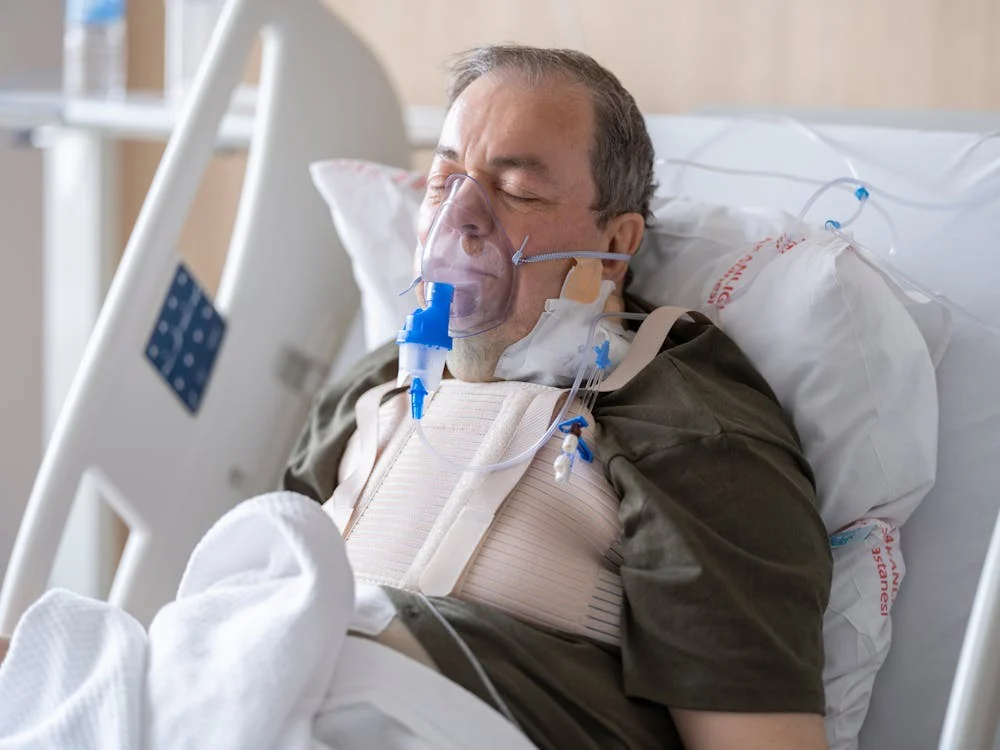Olmesartan medoxomil (Benicar) is an ARB (angiotensin II receptor blocker) that is used in the treatment of hypertension, angina, and proteinuria.
Olmesartan medoxomil uses:
-
Hypertension:
- Management of hypertension in patients beyond the age of 6 and in adults.
-
Off Label Use of Olmesartan (Benicar) in Adults:
- Non-ST-elevation acute coronary syndrome.
- Proteinuric chronic kidney disease (diabetic or non-diabetic).
- ST-elevation myocardial infarction
Olmesartan medoxomil Dose in Adults
Olmesartan medoxomil Dose in the treatment of acute coronary syndromes:
Note:
- Patients who are unable to tolerate an ACE inhibitor may use this medication as a substitute (eg, due to cough).
- An angiotensin II receptor blocker (ARB) can potentially be an alternative in patients with past angiotensin-converting enzyme (ACE) inhibitor-associated angioedema (i.e., without urticaria or other symptoms of hypersensitivity).
- ARBs don't seem to make angioedema risk more likely.
- However, patients must be informed that an ACE inhibitor may occasionally cause angioedema to return within months of withdrawal.
- An allergist should potentially be recommended.
Olmesartan medoxomil dose in the treatment of Non-ST-elevation acute coronary syndrome (alternative agent) (off-label):
Note:
- Patients should have stable hemodynamics prior to starting.
- Use as part of a health regimen that is recommended for you, which may include include beta-blockers, statins, and antiplatelet agents.
- Continue Patients who also have concurrent diabetes, a left ventricular ejection fraction below 40%, hypertension, or persistent chronic renal disease should get ARB medication indefinitely.
- Dosing is determined by the general dosing range in the manufacturer's labelling.
- Initial:
- 20 milligrammes taken orally once per day.
- As tolerated, increase the dose up to 40 mg/day while being closely watched to prevent hypotension.
Olmesartan medoxomil dose in the treatment of ST-elevation myocardial infarction (alternative agent) (off-label):
Note:
- Patients should have stable hemodynamics prior to starting.
- Use as part of a health regimen that is suitable for you, which may include include statins, beta-blockers, and antiplatelet agents.
- Continue ARB treatment for ever.
- Dosing is determined by the manufacturer's labeling's general dosing range.
- Initial:
- 20 milligrammes taken orally once per day.
- As tolerated, increase the dose up to 40 mg per day while being closely watched to prevent hypotension.
Olmesartan medoxomil Dose in the treatment of Hypertension:
Note:
- The medication may be used in conjunction with another suitable agent as the first line of treatment for patients with blood pressure that is 20/10 mm Hg or more above target (eg, long-acting dihydropyridine calcium channel blocker, thiazide diuretic).
- Some professionals advise an initial trial of monotherapy for patients who are 20/10 mm Hg or more above target.
- However, many patients will eventually require combined therapy.
- Initial:
- 20 milligrammes taken orally once per day.
- Every 4-6 weeks, evaluate the patient's response, and adjust the dosage up to 40 mg once per day as necessary.
Olmesartan Dose in the treatment of Proteinuric chronic kidney disease (diabetic or nondiabetic) (off-label):
Note:
- In non-diabetic and type 2 diabetic proteinuric chronic kidney disease, an ARB or an ACE inhibitor may be utilised (CKD).
- Patients with type 1 diabetic proteinuric CKD who are unable to tolerate an ACE inhibitor may instead utilise an ARB (eg, due to cough).
- In patients with past ACE inhibitor-associated angioedema, olmesartan may be an option (ie, without urticaria or other signs of hypersensitivity).
- ARBs do not increase the risk of angioedema.
- Patients must be informed, though, that angioedema brought on by an ACE inhibitor may occasionally return within months of withdrawal.
- An allergist should potentially be recommended.
- Initial:
- 20 milligrammes taken orally once per day.
- 40 mg once a day can be added based on blood pressure response and tolerability.
- Target a proteinuria objective of less than 1 g per day and a suitable blood pressure target.
-
IgA nephropathy:
- In addition to a reasonable blood pressure target, a proteinuria target of less than 1 g per day is typically advised.
- Some medical professionals set a proteinuria target of 500 mg per day.
- Consider adding additional modalities and agents if the proteinuria objective is not achieved with monotherapy at the maximum dose.
Olmesartan medoxomil Dose in Children
Note: Patients who may have intravascular volume depletion should be started on a lower dose (eg, patients receiving diuretics).
Olmesartan Dose in the treatment of Hypertension:
-
Children (age 1 - 5 years, weight > 5 Kgs):
- Initial:
- 0.3 mg/kg/dose taken orally once per day; if, after two weeks, the first reaction is insufficient, the dose may be increased to 0.6 mg/kg/dose taken orally once per day.
- In a double-blind, placebo-controlled research involving 59 individuals, the dosage was assessed, and some efficacy was shown.
- Results weren't statistically significant, though.
-
Children and Adolescents 6 to 16 years:
- 20 to <35 kg:
- 10 mg orally once daily.
- After two weeks, the dose could be increased if the initial reaction is insufficient.
- Max daily dose:
- 20 mg/day
- ≥35 kg:
- 20 mg once daily.
- After two weeks, the dose may be increased if the initial response is insufficient.
- Max daily dose:
- 40 mg/day
- 20 to <35 kg:
-
Adolescents >16 years:
- Initial:
- 20 mg orally once daily.
- If the first reaction is insufficient after two weeks, the dose may be increased to 40 mg once daily.
- Initial:
Pregnancy Risk Factor D
[US Boxed Warning]
- Drugs that interfere with the renin/angiotensin system can harm or even kill a developing foetus.
- Stop having children if you are expecting.
- Drug use that interferes with the renin/angiotensin system has been linked to oligohydramnios.
- Due to the decreased foetal renal function, oligohydramnios can result in skeletal deformities and hypoplastic foetal lungs.
- Additionally, usage is linked to hypotension, anuria, renal failure, hypoplasia of the skull, and death in foetuses and neonates.
- Look for indications of foetal growth, amniotic fluid volume, and organ development in the exposed foetus.
- Children exposed to oliguria, hypotension, and hyperkalemia when they were developing should be examined (exchange transfusions may be necessary).
- These unfavourable outcomes are frequently linked to maternal usage in the second and third trimesters.
- Negative outcomes for the mother, child, or foetus can also be linked to chronic maternal hypertension that is untreated.
- Angiotensin II receptor blockers should not be used to treat chronic, uncomplicated hypertension in pregnant women.
Olmesartan use during breastfeeding:
- It is unknown if breast milk contains olmesartan or not.
- The manufacturer advises the mother to make the decision regarding whether to stop breastfeeding or stop taking the medication. This takes into account the possibility of severe adverse effects.
Olmesartan Dose in Kidney Disease:
-
CrCl ≥40 mL/min:
- No dosage change is required.
-
CrCl <40 mL/min:
- No initial dosage modification is required.
- Individuals with CrCl 20 mL/min had a 3-fold rise in AUC, and a maximum dose of 20 mg/day has been suggested for these patients.
Olmesartan medoxomil Dose in Liver Disease:
-
Mild impairment:
- No dosage change is required.
-
Moderate to severe:
- No initial dosage modification is required.
- Total drug exposure rose by around 60% in mild impairment.
Side Effects of Olmesartan medoxomil:
-
Central Nervous System:
- Dizziness
- Headache
-
Endocrine & Metabolic:
- Hyperglycemia
- Hypertriglyceridemia
-
Gastrointestinal:
- Diarrhea
-
Genitourinary:
- Hematuria
-
Neuromuscular & Skeletal:
- Back Pain
- Increased Creatine Phosphokinase
-
Respiratory:
- Bronchitis
- Flu-Like Symptoms
- Pharyngitis
- Rhinitis
- Sinusitis
Rare side effects of Olmesartan medoxomil:
-
Hematologic & oncologic:
- Decreased hematocrit
- Decreased hemoglobin
Contraindications to Olmesartan medoxomil:
- In patients with diabetes mellitus, concomitant use with aliskiren.
Canadian labeling:Additional contraindications not listed in the US labeling:
- Hypersensitivity to any ingredient in the mixture, including olmesartan
- Aliskiren should be used concurrently in patients with moderate to severe renal impairment (GFR 60 mL/min/1.73 m2).
- There is not much evidence of an allergenic cross-reactivity between angiotensin II receptor blocking agents and angiotensin II receptor blocksers.
- Due to similarities in chemical structure and pharmacologic outcomes, cross-sensitivity is a possibility.
Warnings and precautions
-
Angioedema
- It is not advised to use angiotensin II receptor inhibitor antagonists (ARBs) to raise the risk of angioedema.
- Patients having a history of angioedema brought on by an ACE inhibitor must be informed that recurrence can occasionally occur within months of withdrawal (Beltrami 2011).
- Numerous factors can lead to angioedema.
- Regular exams are crucial, especially if the tongue, glottis, or larynx are affected.
- They are frequently linked to airway blockage.
- Stop all therapy immediately if angioedema develops
- It is crucial to be aggressive in early management.
- It may be necessary to administer epinephrine intramuscularly.
- The ARB shouldn't be administered to patients who experience angioedema as a result of this medicine.
-
Gastrointestinal effects:
- There have been instances of sprue-like enteropathy symptoms (i.e. severe, chronic diarrhoea with significant weight gain).
- After therapy, a condition called villous atrophy could appear. Oftentimes, it turns up in intestinal biopsies.
- After excluding all other potential causes, stop the medication and research further antihypertensive options.
- A series of 22 patients was examined and found that there was a clinical and histologic improvement after discontinuing treatment.
-
Hyperkalemia:
- It may happen.
- Diabetes mellitus, renal impairment, concurrent use of potassium-sparing diuretics, potassium supplements, and potassium-containing salts are risk factors.
- These agents should be used with caution.
-
Hypotension
- Patients who are very dehydrated or salt-depleted may experience hypotension (eg those who have been treated with high dose diuretics).
- Before administration, the proper volume depletion must be performed.
- You should still be able to receive olmesartan notwithstanding your brief hypotensive response.
-
Renal function deterioration:
- In patients with limited renal flow (such as those with kidney artery stenosis or heart failure), whose GFR depends on angiotensin II efferent arterial vasoconstriction, this may be related to deterioration in renal function and increases in serum creatinine.
- Oliguria and abrupt renal failure might result from a decline.
- Small increases in serum creatinine may happen after starting.
- Patients with significant and progressive impairment of renal function should be considered for discontinuation.
-
Mitral and aortic stenosis:
- Patients with severe aortic/mitralstenosis should be cautious
-
Ascites:
- Avoid patients who have cirrhosis and refractory ascites.
- You shouldn't use patients who have ascites from cirrhosis. Blood pressure and renal function should be checked in order to prevent fast renal failure.
-
Renal artery stenosis
- In individuals with unstented unilateral or bilateral renal artery stenosis, use olmesartan with caution.
- It is advised to avoid use if there is untreated bilateral renal arterial stenosis unless the benefits may outweigh the hazards.
-
Renal impairment
- Pre-existing renal impairments should be avoided.
Monitoring Parameters:
- Baseline & periodic blood pressure.
- Electrolytes, renal function.
Hypertension:
The 2017 Guideline for the Prevention, Detection, Evaluation, and Management of High Blood Pressure in Adults (ACC/AHA [Whelton 2018]):
- Known CVD or 10-year atherosclerotic cardiovascular disease (ASCVD) risk of 10% or confirmed hypertension:
- Target blood pressure <130/80 mm Hg is recommended.
- Confirmed hypertension without signs of a higher risk for ASCVD:
- Target blood pressure <130/80 mm Hg may be reasonable.
Diabetes and hypertension:
The American Diabetes Association (ADA) guidelines (ADA 2019):
- Patients 18-65 years of age, without ASCVD, and 10-year ASCVD risk <15%:
- Target blood pressure <140/90 mm Hg is recommended.
- Patients 18 to 65 years of age and known ASCVD or 10-year ASCVD risk >15%:
- Target blood pressure <130/80 mm Hg may be appropriate if it can be safely attained.
- Patients >65 years of age (healthy or complex/intermediate health):
- Target blood pressure <140/90 mm Hg is recommended.
- Patients >65 years of age (very complex/poor health):
- Target blood pressure <150/90 mm Hg is recommended.
How to administer Olmesartan medoxomil?
- P/O:
- Administer with or without food.
Mechanism of action of Olmesartan medoxomil:
- Olmesartan prevents angiotensin II's vasoconstrictor and aldosterone-secreting actions by acting as a selective and competitive nonpeptide angiotensin II receptor antagonist.
- Olmesartan interacts reversibly with AT1 or AT2 receptors in a variety of tissues. It dissociates slowly as well.
- It has a 12,500x stronger affinity for AT1 receptors than AT2 receptors.
- Compared to ACE inhibitors, angiotensin II receptor antagonists may cause a more complete suppression of the renin-angiotensin system. They also have no influence on how the body reacts to bradykinin and are less likely to have non-renin-angiotensin effects (eg, cough and angioedema).
- Olmesartan is a natriuretic/kaliuretic that boosts urine flow and calcium, magnesium, and phosphate excretion.
Distribution:
- 17 L.
- Does not cross the blood-brain barrier (animal studies)
Protein binding:
- 99%
Metabolism:
- In the GI tract to active olmesartan, Olmesartan medoxomil is hydrolyzed.
- No further metabolism occurs.
Bioavailability:
- 26%
Half-life elimination:
- Terminal:
- 13 hours
Time to peak:
- 1-2 hours
Excretion:
- All as unchanged drug:
- Feces (50% to 65%).
- Urine (35% to 50%)
- Clearance:
- 1.3 L/hour.
- Similar data reported in children (1-16 years) when adjusted by body weight
International Brands of Olmesartan Medoxomil:
- Benicar
- ACT Olmesartan
- AG-Olmesartan
- APO-Olmesartan
- Auro-Olmesartan
- GLN-Olmesartan
- JAMPOlmesartan
- Olmetec
- PMS-Olmesartan
- RIVA-Olmesartan
- SANDOZ Olmesartan
- Abetis
- Almetec
- Alteis
- Alzor
- Angiosartan
- Ao Tan
- Arb-S
- Belsar
- Benetor
- Cardioplus
- Cardosal
- Cresart
- Dolezine
- Erastapex
- Esatec
- Iltux
- Ixia
- Kaportan
- Lezberg
- Macolme
- Mesar
- Normesar
- Olartan
- Oldesar
- Ole
- Olesta
- Olimestra
- Olme
- Olmec
- Olmecor
- Olmepas
- Olmertan
- Olmes
- Olmesan
- Olmesta
- Olmetec
- Olmetel
- Olmezar
- Olsart
- Omecor
- Omesar
- Openvas
- Orion
- Osaver
- Presulock
- Tenzar
- Vivactra
- Votum
Olmesartan Brand Names in Pakistan:
|
Olmesartan Medoxomil 5 mg Tablets |
|
| Bensar | Pharmevo (Pvt) Ltd. |
| Bensar | Pharmevo (Pvt) Ltd. |
| Negatin | Wilsons Pharmaceuticals |
| Negatin | Wilsons Pharmaceuticals |
| Oscord | Hilton Pharma (Pvt) Limited |
| Oscord | Hilton Pharma (Pvt) Limited |
Olmesartan Medoxomil 10 mg Tablets |
|
| Malisartan | Alied Medical |
| Omsana | Hilton Pharma (Pvt) Limited |
| Orion | Ferozsons Laboratoies Ltd. |
| Oscord | Hilton Pharma (Pvt) Limited |
Olmesartan Medoxomil 20 mg Tablets |
|
| Baritec | Barrett Hodgson Pakistan (Pvt) Ltd. |
| Baritec-A | Barrett Hodgson Pakistan (Pvt) Ltd. |
| Bensar | Pharmevo (Pvt) Ltd. |
| Malisartan | Alied Medical |
| Negatin | Wilsons Pharmaceuticals |
| Olesta | Searle Pakistan (Pvt.) Ltd. |
| Olesta | Searle Pakistan (Pvt.) Ltd. |
| Olmicar | Rasco Pharma |
| Olmipress | Remington Pharmaceutical Industries (Pvt) Ltd. |
| Omsana | Hilton Pharma (Pvt) Limited |
| Orion | Ferozsons Laboratoies Ltd. |
| Oscord | Hilton Pharma (Pvt) Limited |
Olmesartan Medoxomil 40 mg Tablets |
|
| Baritec | Barrett Hodgson Pakistan (Pvt) Ltd. |
| Bensar | Pharmevo (Pvt) Ltd. |
| Bensar | Pharmevo (Pvt) Ltd. |
| Malisartan | Alied Medical |
| Negatin | Wilsons Pharmaceuticals |
| Negatin | Wilsons Pharmaceuticals |
| Olesta | Searle Pakistan (Pvt.) Ltd. |
| Olmicar | Rasco Pharma |
| Olmipress | Remington Pharmaceutical Industries (Pvt) Ltd. |
| Omsana | Hilton Pharma (Pvt) Limited |
| Orion | Ferozsons Laboratoies Ltd. |
| Oscord | Hilton Pharma (Pvt) Limited |




 Injection.webp)